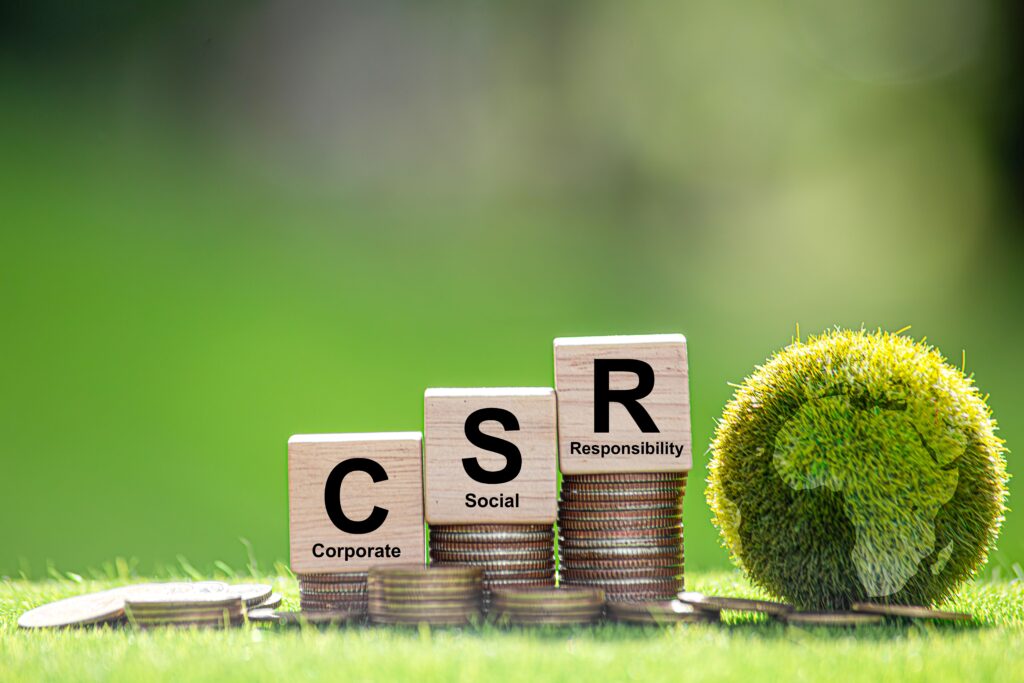By Daniel Butcher
Becoming a respected, powerful leader often requires a fundamental mindset shift of letting go of a need to be seen as likeable and authentic. In fact, effective leaders don’t dwell on how their management style and decisions will affect their popularity but rather focus on what’s best for the organization and what will inspire employees to perform well, according to Academy of Management Scholar Jeffrey Pfeffer of Stanford University.
Pfeffer, one of today’s most influential management professors and researchers, offers some takeaways on that subject from his book 7 Rules of Power. Leadership isn’t a popularity contest; rather, it’s about levering influence to achieve strategic objectives for the good of the organization’s shareholders.
“You need to learn how to interact with other people across your organization in ways that build your influence and permit you to get the things done that you want to get done,” Pfeffer says.
One of Pfeffer’s tips for current and aspiring leaders is to “lose the self-descriptions and inhibitions that hold you back, for example, the idea that you have to be liked, because, as an executive, you’re hired to get things done, not necessarily to win a popularity contest. Lose this currently popular idea that you need to be quote-unquote authentic, which is, of course, incorrect.”
The best leaders know the optimal course of action may involve breaking the rules, including policies and procedures that fall into the “but we’ve always done things this way” category. Effective leaders embrace innovation and encourage everyone at the organization to do so.
Another key insight is that once professionals have acquired power, what they did to get it will be forgiven, forgotten, or both. Most personnel will fall in line and get on board or eventually leave the organization.
“Once you have power and status and success, no one will care how you got it, and people will people will accommodate themselves, because people like to be close to power,” Pfeffer says.
Once they’re in a leadership position, high-ranking executives shouldn’t be shy about using their power, he stresses, even if they step on a few toes or ruffle some feathers. Leaders who let go of the idea that they need to be liked or loved and instead act decisively may face resistance or even spark anger but will likely earn employees’ respect.
-
Daniel Butcher is a writer and the Managing Editor of AOM Today at the Academy of Management (AOM). Previously, he was a writer and the Finance Editor for Strategic Finance magazine and Management Accounting Quarterly, a scholarly journal, at the Institute of Management Accountants (IMA). Prior to that, he worked as a writer/editor at The Financial Times, including daily FT sister publications Ignites and FundFire, Crain Communications’s InvestmentNews and Crain’s Wealth, eFinancialCareers, and Arizent’s Financial Planning, Re:Invent|Wealth, On Wall Street, Bank Investment Consultant, and Money Management Executive. He earned his bachelor’s degree from the University of Colorado Boulder and his master’s degree from New York University. You can reach him at dbutcher@aom.org or via LinkedIn.
View all posts
Up next....
Two Factors that Determine Young Professionals’ Drinking Levels
By Daniel Butcher
Early-career professionals often drink as much alcohol as they did in college or even more after graduation, especially if they’re working in a sales role with a boss or mentor who drinks a lot, research shows. But young workers in roles that make them feel empowered and who are surrounded by supportive coworkers who tend to drink alcohol in moderation are more likely to deal with socialization and stress in healthy ways and avoid problem drinking.
That’s according to Academy of Management Scholar Peter Bamberger of Tel Aviv University, who said supportive peer relationships with abstainers or moderate drinkers can be influential, as can jobs that provide a higher level of psychological empowerment.
“A combination of the two—peer support and empowerment—make it so that people aren’t as stressed out by being given roles and tasks that they may not be able to handle, because underlying a lot of what’s involved with this drinking are two main motivations,” Bamberger said. “One is a normative social motivation to go out and drink to become socially integrated in their workplace.
“The second is a stress motivation: ‘This is how I coped with stress in college; I went out to drink, and now I do the same thing at work,’” he said. “One of the critical things that we show in our research studies is that if managers can find alternative ways of coping with stress, actually being proactive in terms of trying to address some of the stressors that newcomers face at work, like uncertainty, they may be able to speed up that maturing out process that can lead to reduced levels of alcohol consumption among early-career professionals.
“Support from peers and psychological empowerment were keys to success in that.”
-
Daniel Butcher is a writer and the Managing Editor of AOM Today at the Academy of Management (AOM). Previously, he was a writer and the Finance Editor for Strategic Finance magazine and Management Accounting Quarterly, a scholarly journal, at the Institute of Management Accountants (IMA). Prior to that, he worked as a writer/editor at The Financial Times, including daily FT sister publications Ignites and FundFire, Crain Communications’s InvestmentNews and Crain’s Wealth, eFinancialCareers, and Arizent’s Financial Planning, Re:Invent|Wealth, On Wall Street, Bank Investment Consultant, and Money Management Executive. He earned his bachelor’s degree from the University of Colorado Boulder and his master’s degree from New York University. You can reach him at dbutcher@aom.org or via LinkedIn.
View all posts
Up next....
Binge Drinking Decreases After College, Right? Not So Fast…
By Daniel Butcher
Contrary to popular belief, university students don’t get drinking out of their systems during their college years before entering the workforce. Studies show drinking levels increase after graduation and peak in the mid-20s.
Academy of Management Scholar Peter Bamberger of Tel Aviv University said that especially for some client-facing roles such as sales, on-the-job pressures and social situations often lead to increased alcohol consumption among young professionals.
“The common perception is that people’s drinking is at its highest levels for young adults, at least when they’re in college, and then as soon as they get out of college, they take on employment; they start their career, and their drinking very quickly declines,” Bamberger said. “However, there’s been some indication already for the past 10 years that that may not be the case.
“In fact, the data on young adults shows that, particularly among college students and twenty-somethings, the peak levels of alcohol use and misuse are actually at around ages 25 and 26, and they’re continuously rising after graduation,” he said. “It’s not like people graduate from college and mature out of their drinking—the party continues.”
Bamberger and colleagues have studied different profiles of alcohol drinkers. Their research findings don’t always align with popular narratives about booze consumption.
“We’ve looked at how people drink alcoholic beverages, how frequently and when they drink, and there are certain patterns that are more problematic than others,” Bamberger said. “First of all, where individuals engage in heavy episodic drinking, like binge drinking, and they do it more frequently, and they do it not necessarily only on a weekend but during the week as well, that’s a very risky pattern.
“And then you have more in the middle of the range, moderate traits and patterns, and then you have patterns like only drinking socially or only on special occasions, and you have abstainers, but and most college students do drink—most are not abstainers,” he said.
“We have these three patterns among people who drink, and when we look at the likelihood of people shifting from a really risky pattern of heavy drinking to a more moderate pattern, or from a moderate pattern to light drinking, what we find is that these patterns are in fact rather sticky.”
-
Daniel Butcher is a writer and the Managing Editor of AOM Today at the Academy of Management (AOM). Previously, he was a writer and the Finance Editor for Strategic Finance magazine and Management Accounting Quarterly, a scholarly journal, at the Institute of Management Accountants (IMA). Prior to that, he worked as a writer/editor at The Financial Times, including daily FT sister publications Ignites and FundFire, Crain Communications’s InvestmentNews and Crain’s Wealth, eFinancialCareers, and Arizent’s Financial Planning, Re:Invent|Wealth, On Wall Street, Bank Investment Consultant, and Money Management Executive. He earned his bachelor’s degree from the University of Colorado Boulder and his master’s degree from New York University. You can reach him at dbutcher@aom.org or via LinkedIn.
View all posts
Up next....
Sharing Info, Workloads, Positive Feeback Boosts Productivity
By Daniel Butcher
Leaders who can install processes for effective, timely information-sharing, fair workload distribution, and civil communication—including positive feedback—foster the best collaboration and productivity among team members.
Academy of Management Scholar Peter Bamberger of Tel Aviv University said that lackluster productivity is often a result of poor information-sharing and workload-sharing behaviors.
“Team processes are hard; people can’t always pick up the signals that they need to,” Bamberger said. “For example, if they have a piece of information that someone else needs, when should they pass it on to this other person? A nurse has a test result; when should she pass it on to the to the team leader or attending physician?
“If she passes it on too early, she’s going to disrupt what they’re doing, which clearly affects their performance, but if she passes it on too late, it could be deadly, so timing and synchrony of such tasks are crucial,” he said.
Incivility and rudeness also undermine productivity, while civility and kindness tend to boost it.
“In research on medical teams, we demonstrated that when people experience gratitude at work it can often, but not always, have beneficial implications,” Bamberger said. “A lot depends on the source of the gratitude and the nature of the task at hand.
“In one experiment, we had the three teams: a control condition, one that viewed a video before they started the day from a senior neonatologist talking about how grateful he is to everybody in the field for doing the wonderful work they do to save these babies, which had nothing in terms of a productivity boost, but then we had a third group where we had a mother of a preemie talk about how grateful she was to the medical team that saved her child, and that had massive positive effects,” he said.
“We demonstrate what that does to the team interaction through the implications based on a theory in cognitive science called [Fredrickson’s]broaden-and-build, which explains how positive emotions have beneficial effects on people’s ability to be flexible in their thinking, to absorb more information, and things like that.”
Bamberger and colleagues also demonstrate that the effects were much stronger when a mother expressed gratitude than when a senior colleague did.
Sharing positive customer feedback
Business leaders and managers can leverage these insights to improve their effectiveness.
“They can demonstrate gratitude themselves; it does make intuitive sense that if managers and leaders behave with civility and politeness, then that may set an example for the rank-and-file employees to do the same, but they can encourage customers and clients or patients to say ‘thank you’ directly,” Bamberger said. “If you like the way a flight attendant treated you on a flight, you’re supposed to write the company, but what if you were actually put in direct contact with the flight attendant and were able to express the gratitude directly?
“Our evidence suggests that that’s going to have a much stronger effect than a manager saying, ‘You got three positive letters this week,’” he said. “Setting up systems for customers to directly express positive feedback has the potential to significantly boost employee morale and performance.”
-
Daniel Butcher is a writer and the Managing Editor of AOM Today at the Academy of Management (AOM). Previously, he was a writer and the Finance Editor for Strategic Finance magazine and Management Accounting Quarterly, a scholarly journal, at the Institute of Management Accountants (IMA). Prior to that, he worked as a writer/editor at The Financial Times, including daily FT sister publications Ignites and FundFire, Crain Communications’s InvestmentNews and Crain’s Wealth, eFinancialCareers, and Arizent’s Financial Planning, Re:Invent|Wealth, On Wall Street, Bank Investment Consultant, and Money Management Executive. He earned his bachelor’s degree from the University of Colorado Boulder and his master’s degree from New York University. You can reach him at dbutcher@aom.org or via LinkedIn.
View all posts
Up next....
Why Retirees Change Their Alcohol Consumption
By Daniel Butcher
Whether people increase or decrease the amount of alcohol they drink after retirement depends on a range of factors, including what role and industry they retire from.
Academy of Management Scholar Peter Bamberger of Tel Aviv University said that he and colleagues studied the implications of general work-related transitions on health and well-being, with a particular focus on subjects’ behavior with regard to drinking alcohol, before and after retirement.
“We actually started with people as they move towards retirement, and we did a 10-year study,” Bamberger said. “The research was finding mixed effects of retirement on alcohol consumption; some studies found that retirement is a great way to address your drinking problems, because you’re often removing people from a high-risk environment where people around them drink a lot.
“But other studies were finding that people go into retirement and move into a retirement community and happy hour starts at noon,” he said.
Bamberger’s and colleagues’ question was, ‘Is retirement good or bad with regard to alcohol consumption or misuse?’ They were looking at various factors that determine when a person’s level of drinking goes in one direction and when it goes in the other direction.
“A simple finding is, if you’re coming out of a high-risk occupation, for example, iron workers, people who build skyscrapers—this is an occupation that has its roots with very heavy drinking communities, so if you joined that occupation, at least in the past, you were likely to adopt those patterns, or you wouldn’t stay in the occupation,” Bamberger said. “So retiring from that is obviously going to be beneficial, because you’re taking yourself out of a social context of high alcohol consumption.”
But there are other variables to consider, including relationships with friends, family, and spouses. A best practice for retirees is keeping busy with hobbies, volunteerism, or even some part-time work, any activity aimed at staying engaged and connected and ensuring a continuing sense of self-worth and contribution.
“We looked at some of the factors that are associated with retirement, like financial stress and marital strain, with one member of a couple working the other one not, and we can find implications there as well for drinking,” Bamberger said. “The routine is disrupted; there’s more free time for one partner in the relationship but not the other.
“There’s a vast array of moderating and conditioning factors that determine when retirement has one implication—more drinking—versus another—less drinking,” he said. “Retirees who plan how to structure their time post-separation from work tend to have better health outcomes.
“Overall, work-related transitions can be difficult for people, and our current research has aimed at exploring the mental-health implications of other such transitions, including for students and soldiers transitioning into career employment for the first time.”
-
Daniel Butcher is a writer and the Managing Editor of AOM Today at the Academy of Management (AOM). Previously, he was a writer and the Finance Editor for Strategic Finance magazine and Management Accounting Quarterly, a scholarly journal, at the Institute of Management Accountants (IMA). Prior to that, he worked as a writer/editor at The Financial Times, including daily FT sister publications Ignites and FundFire, Crain Communications’s InvestmentNews and Crain’s Wealth, eFinancialCareers, and Arizent’s Financial Planning, Re:Invent|Wealth, On Wall Street, Bank Investment Consultant, and Money Management Executive. He earned his bachelor’s degree from the University of Colorado Boulder and his master’s degree from New York University. You can reach him at dbutcher@aom.org or via LinkedIn.
View all posts
Up next....
Rudeness Doesn’t Motivate Workers—Quite the Opposite
By Daniel Butcher
Some business leaders and managers resort to barbs or even shouting to motivate staff members, but research shows that a coercive leadership style is counterproductive. In fact, civility leads to improved team cohesion and performance, while rudeness hurts workers’ performance.
Academy of Management Scholar Peter Bamberger of Tel Aviv University said that several research papers on the subject explore the implications that emotion-laden events in organizations have on interpersonal relations and team dynamics. In a nutshell, rudeness creates a huge distraction that undermines productivity.
“For example, why can’t you text and drive at the same time? When you’re driving, the reason you don’t text is because—aside from it being against the law—you’re distracted,” Bamberger said. “It’s a complex process to text—it takes your attention, so you have limited cognitive resources, and driving is also complex.
“Whatever goes to the texting is not available for driving, and the result could be death,” he said.
What’s the connection between texting while driving and leadership style, as well as interactions between coworkers? Rudeness and even mild incivility are actually highly emotional events that occur frequently in the workplace.
“Many, many employees experience rudeness at work, and it’s rather ambiguous,” Bamberger said. “It’s not like being bullied or attacked physically, but in response to rudeness, you’ve got to try to figure out what is threatening to some degree, but you don’t know how threatening it is.
“And precisely because of that, and largely unconsciously, your brain is engaging and trying to determine the degree of threat,” he said. “That’s not a mindset that’s conducive to analysis, attention to detail, or any type of thought-demanding work.”
-
Daniel Butcher is a writer and the Managing Editor of AOM Today at the Academy of Management (AOM). Previously, he was a writer and the Finance Editor for Strategic Finance magazine and Management Accounting Quarterly, a scholarly journal, at the Institute of Management Accountants (IMA). Prior to that, he worked as a writer/editor at The Financial Times, including daily FT sister publications Ignites and FundFire, Crain Communications’s InvestmentNews and Crain’s Wealth, eFinancialCareers, and Arizent’s Financial Planning, Re:Invent|Wealth, On Wall Street, Bank Investment Consultant, and Money Management Executive. He earned his bachelor’s degree from the University of Colorado Boulder and his master’s degree from New York University. You can reach him at dbutcher@aom.org or via LinkedIn.
View all posts
Up next....
If You Do Employee Surveys, Listen to Respondents
By Daniel Butcher
Conducting regular employee surveys is a best practice that leads to better engagement, morale, retention, and productivity. But it isn’t enough to simply collect responses, according to Academy of Management Scholar Quinetta Roberson of Michigan State University. It’s important for leaders to actually listen to respondents’ thoughts and feelings and take action to correct problems.
Roberson said that she was working with a large organization as a diversity consultant to develop a strategic plan and objectives. A key step was to collect feedback from its employees, some of whom were ringing alarm bells.
“In their employee survey, they had people who were talking about interpersonal incidents with their coworkers, and they felt bullied and harassed,” Roberson said. “Particularly members of certain groups didn’t feel a sense of belonging and would project that they only had a year left in the organization.
“And so I said, ‘That is really bad; we’ve got to address this … let’s talk about how to address this problem that people say they felt bullied and harassed,’” she said. “I didn’t say this as my own personal opinion; I was literally looking at the responses to their employee survey.
“And they said, ‘We don’t want to say that because it might make other people feel like they are harassed or bullied, and so their whole communication approach was to say, ‘We’ve got some good stuff going on, but we don’t want to talk about the bad stuff.”
While focusing on the positive is an understandable impulse, by not prioritizing the negatives, leaders and managers miss opportunities to make improvements that boost employee engagement, morale, retention, and productivity.
“It isn’t easy work to do, but if you put in the time and the investment, it also isn’t rocket science, so people have to be willing to do the work and get into the stickiness of it,” Roberson said.
“That’s the kind of conversations that I have, because if they’re not willing to do that hard work of thinking about ‘What do we do to fix our problems? What should our goals be? How do we want to be better? How could we be better? And how could we measure that?’ then I’m not the person to work with them, because that’s where I do my work at that strategic level,” she said.
“And that’s just a personal thing from my research and my background where I say, ‘If we don’t have those conversations about formulating strategy, developing dashboards, and creating processes to drive change, then we’re not going to get anywhere; we’re just putting a band-aid on stuff.’”
-
Daniel Butcher is a writer and the Managing Editor of AOM Today at the Academy of Management (AOM). Previously, he was a writer and the Finance Editor for Strategic Finance magazine and Management Accounting Quarterly, a scholarly journal, at the Institute of Management Accountants (IMA). Prior to that, he worked as a writer/editor at The Financial Times, including daily FT sister publications Ignites and FundFire, Crain Communications’s InvestmentNews and Crain’s Wealth, eFinancialCareers, and Arizent’s Financial Planning, Re:Invent|Wealth, On Wall Street, Bank Investment Consultant, and Money Management Executive. He earned his bachelor’s degree from the University of Colorado Boulder and his master’s degree from New York University. You can reach him at dbutcher@aom.org or via LinkedIn.
View all posts
Up next....
Help Employees Enter Training with a Motivated Mindset
By Daniel Butcher
For employee training sessions to be effective, it’s crucial for employees to be briefed on the objectives and the benefits of actively participating with a positive mindset.
Academy of Management Scholar Quinetta Roberson of Michigan State University said that before scheduling an employee training session, leaders should think through the pre-training process carefully.
“Usually, in the pre-training environment, employees get something that says, ‘You have to go through training,’ but it doesn’t tell them why they’re going through it, how to prepare for it, or how it’s going to help them and make them more effective employees,” Quinetta said.
“That really is important for people’s motivation to learn, to be able to say, ‘This training is going to be valuable to you; if you’re going to take four hours out of your busy day, this is how that’s going to benefit you—here are the benefits that you’re going to realize,’” she said.
“At least say, ‘There are the learning goals; here are some things you should get out of this training,’ because then they start to focus a bit more on what they should be getting out of this four-hour training period, or whatever the time period may be.”
It’s a best practice to let employees know that their lack of knowledge of a particular subject won’t be held against them, and that they should feel free to speak their minds and make mistakes. Make it clear that leaders don’t expect perfection but do want employees to participate actively and seek opportunities for learning.
“In the training event itself, we give certain suggestions for how to make the training more engaging, reflective, and useful to people; for example, a lot of training does not allow mistakes or errors,” Roberson said. “For one organization, all employees were required to go through online sexual harassment training , and in the post-training assessment if you push the wrong thing, it just says, ‘No, that’s wrong,’ and it just allowed people to get through the training as long as they got whatever percentage correct that they needed in order for the organization to be compliant.
“But instead, why not experiment with behaviors give participants an opportunity to experiment with different scenarios and ask, ‘How would you address this scenario?’ and let them have a safe space to actually wrestle with that?” she said. “Because then when they get out into the real world, they feel confident that whatever situations arrive, they’re able to deal with them.”
-
Daniel Butcher is a writer and the Managing Editor of AOM Today at the Academy of Management (AOM). Previously, he was a writer and the Finance Editor for Strategic Finance magazine and Management Accounting Quarterly, a scholarly journal, at the Institute of Management Accountants (IMA). Prior to that, he worked as a writer/editor at The Financial Times, including daily FT sister publications Ignites and FundFire, Crain Communications’s InvestmentNews and Crain’s Wealth, eFinancialCareers, and Arizent’s Financial Planning, Re:Invent|Wealth, On Wall Street, Bank Investment Consultant, and Money Management Executive. He earned his bachelor’s degree from the University of Colorado Boulder and his master’s degree from New York University. You can reach him at dbutcher@aom.org or via LinkedIn.
View all posts
Up next....
The Evolution of Corporate Social Responsibility
By Daniel Butcher
Academy of Management Scholar Herman Aguinis of the George Washington University School of Business, one of the most influential management professors and researchers, said corporate social responsibility (CSR) is about three Ps—profit, the planet, and people—the “triple bottom line.” The following is an overview of how CSR has evolved, reflecting changing societal expectations and business practices:
-
Daniel Butcher is a writer and the Managing Editor of AOM Today at the Academy of Management (AOM). Previously, he was a writer and the Finance Editor for Strategic Finance magazine and Management Accounting Quarterly, a scholarly journal, at the Institute of Management Accountants (IMA). Prior to that, he worked as a writer/editor at The Financial Times, including daily FT sister publications Ignites and FundFire, Crain Communications’s InvestmentNews and Crain’s Wealth, eFinancialCareers, and Arizent’s Financial Planning, Re:Invent|Wealth, On Wall Street, Bank Investment Consultant, and Money Management Executive. He earned his bachelor’s degree from the University of Colorado Boulder and his master’s degree from New York University. You can reach him at dbutcher@aom.org or via LinkedIn.
View all posts
Up next....
Tips for Managers to Avoid Team Burnout
By Daniel Butcher
Managers should be on the lookout for signs of burnout in their team members, and a sudden decline in work performance, missed deadlines, or increased errors could be an indication that an employee needs help. Burnout leads to reduced productivity and increased turnover, which is expensive for organizations and causes headaches for managers.
Academy of Management Scholar Sean Martin of the University of Virginia said there’s evidence that many people’s views of the workplace are pretty bleak right now.
“I saw some statistics indicating a lot of folks are feeling a high level of burnout—two-thirds of people would rather get a new boss than a pay raise; they’re just tired of dealing with their boss,” Martin said. “I recently saw another poll that said more than half of people would trust a stranger more than their boss.”
Worker stress has remained at record high levels since the pandemic, with 52% of employees in the U.S. and Canada reporting that they experienced a significant amount of stress on the previous day, according to Gallup. Managers who want to help avoid or mitigate burnout on their team need to realize that people are dealing with stressors both in and out of work and, in response, demonstrate flexibility and empathy.
“There’s a lot of things that are going on in someone’s life like managing family dynamics, extracurriculars, maybe they have care duties for young kids or older parents, so burnout is likely to be present in some form on your team,” Martin said. “If that’s the case, recognize that it’s not always just because of what’s going on at work, although it certainly could be.
“We could either be the kinds of leaders who say, ‘I don’t care—this is work—check all of that stuff at the door and do your job, ’or we could say, ‘I want to deal with a whole person and be the kind of leader that, when people are finished working with me, they view their time with me as time well spent and believe that I had a positive impact on their life and their career,’” he said.
“If you want to be that, then you have to recognize that burnout is an ever-present threat, and when you see people starting to experience it and start seeing the telltale signs of stress, such as retreating into oneself and performance issues in terms of objective measurables, be willing to ask, ‘What can I do? How can I help? ’to start mitigating the burnout that people can feel.”
-
Daniel Butcher is a writer and the Managing Editor of AOM Today at the Academy of Management (AOM). Previously, he was a writer and the Finance Editor for Strategic Finance magazine and Management Accounting Quarterly, a scholarly journal, at the Institute of Management Accountants (IMA). Prior to that, he worked as a writer/editor at The Financial Times, including daily FT sister publications Ignites and FundFire, Crain Communications’s InvestmentNews and Crain’s Wealth, eFinancialCareers, and Arizent’s Financial Planning, Re:Invent|Wealth, On Wall Street, Bank Investment Consultant, and Money Management Executive. He earned his bachelor’s degree from the University of Colorado Boulder and his master’s degree from New York University. You can reach him at dbutcher@aom.org or via LinkedIn.
View all posts
Up next....
Performance Management Needs to Be Well-Defined
By Daniel Butcher
As crucial as performance management is to make sure that organizations’ decisions about compensation, promotions, hires, and cuts are aligned with organizational goals, it can be difficult to define. Leaders first must define performance before they can measure it and evaluate their organization’s performance-management processes and procedures.
That’s according to Academy of Management Scholar Herman Aguinis of the George Washington University School of Business and author of Performance Management for Dummies, who said executives at various organizations have asked him about performance issues, complaining that their employees weren’t performing at the level they should have been. In response, when he asked them how they define performance, they typically fell silent.
“Sometimes leaders don’t do a good job of measuring performance because they don’t define performance well, so the first advice I would offer is to be able to make sure that you define performance in alignment with the strategic goals of the organization, the performance goals for individuals, units, teams, and departments all have to be aligned with the strategic goals of the organization,” Aguinis said.
Aguinis argued that performance evaluations shouldn’t be a once-a-year event. Organizations need to train supervisors on how to provide good feedback, measure performance in an unbiased way, have honest professional-developmental talks with employees regularly, and use performance management as a tool for spotting star performers, skills development, and performance improvement.
“If you’re a manager, your top responsibility is to manage the performance of the people in your unit, because if they do well, then the company does well, and you look good, so performance management should not be pushed by HR only; rather, it should be something that every manager and supervisor is doing,” Aguinis said. “Performance evaluations shouldn’t be just as a tool for punishing and rewarding past behavior, but also as a tool for motivating future outstanding performance.”
-
Daniel Butcher is a writer and the Managing Editor of AOM Today at the Academy of Management (AOM). Previously, he was a writer and the Finance Editor for Strategic Finance magazine and Management Accounting Quarterly, a scholarly journal, at the Institute of Management Accountants (IMA). Prior to that, he worked as a writer/editor at The Financial Times, including daily FT sister publications Ignites and FundFire, Crain Communications’s InvestmentNews and Crain’s Wealth, eFinancialCareers, and Arizent’s Financial Planning, Re:Invent|Wealth, On Wall Street, Bank Investment Consultant, and Money Management Executive. He earned his bachelor’s degree from the University of Colorado Boulder and his master’s degree from New York University. You can reach him at dbutcher@aom.org or via LinkedIn.
View all posts

















